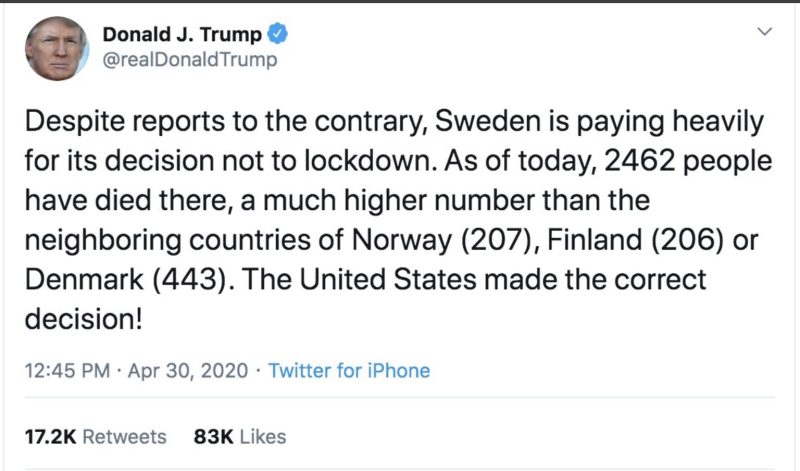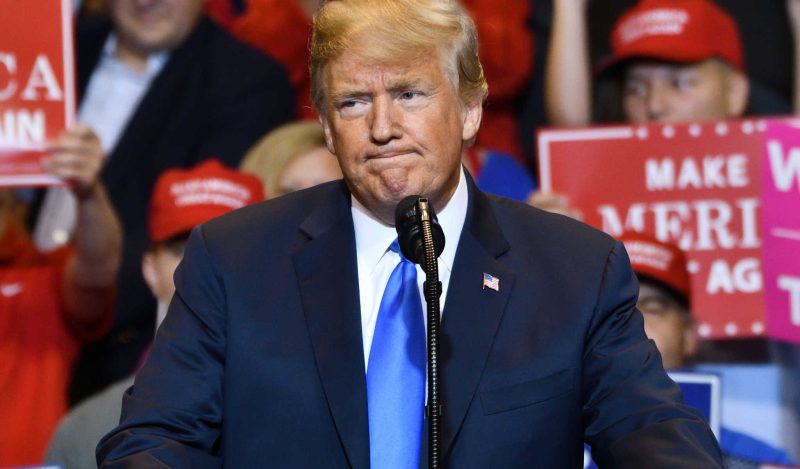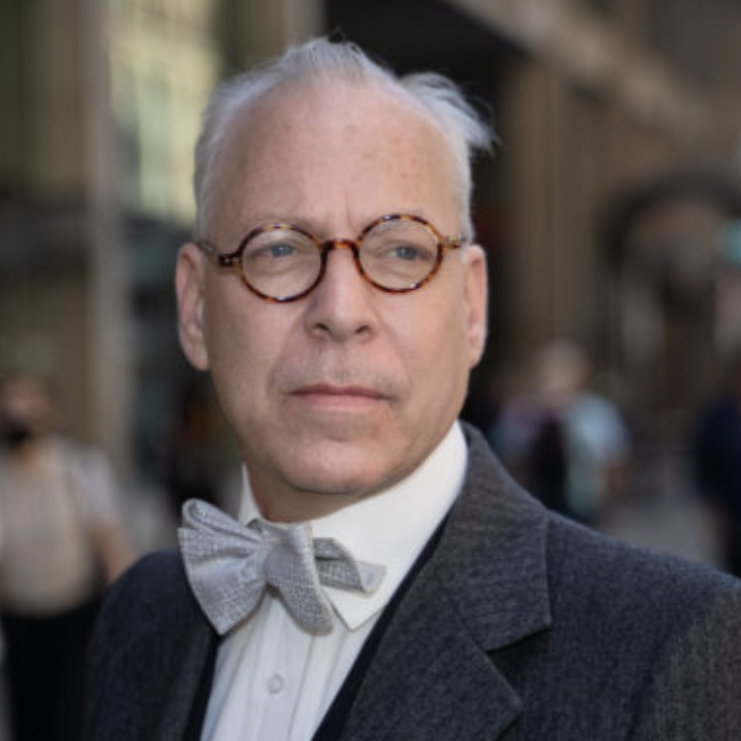All sources we have so far testify that Trump greenlighted nationwide lockdowns the weekend of March 14-15, 2020, under the influence of Deborah Birx, Anthony Fauci, Jared Kushner, and a few others. Brownstone has documented this weekend in great detail. This disastrous decision culminated in the press conference of March 16, 2020.
At this event the White House handed out a sheet of paper to the national media with the shocking demands:
- “Governors should close schools in communities that are near areas of community transmission, even if those areas are in neighboring states.”
- “All states should follow Federal guidance and halt social visits to nursing homes and retirement and long-term care facilities.”
- “Bars, restaurants, food courts, gyms, and other indoor and outdoor venues where groups of people congregate should be closed.”
Trump had agreed to “15 days to flatten the curve,” which Task Force coordinator Deborah Birx later admitted was a ruse, not just tricking the public but Trump too.
“Fifteen Days to Slow the Spread was a start, but I knew it would be just that,” she writes. “I didn’t have the numbers in front of me yet to make the case for extending it longer, but I had two weeks to get them. However hard it had been to get the fifteen-day shutdown approved, getting another one would be more difficult by many orders of magnitude.”
And so the country locked down. Not that Trump had the legal power to do this but, based on his own words, he believed he did. The administrative state – the unelected machinery that surrounded him and had plotted this caper all along – made it so, with only South Dakota resisting all lockdowns.
Ten days later, on March 24, 2020, Trump gave an interview to Fox News in which he said, “I would love to have the country opened up and raring to go by Easter.”
Many people in the press thought that this was too ambitious but consider the timing. Easter was April 12 – long past the 15-day deadline. With that statement, Trump was already signaling that he was open to an extension of lockdowns. It revealed that Trump himself was unconvinced of his own 15-day deadline and was already willing to go the extra mile in keeping the country closed.
A few days later, Birx was again meeting with the CDC’s Bob Redfield and Anthony Fauci. They agreed that the two weeks needed to be extended.
“I felt it should be thirty days,” writes Birx, “but when I broached the subject of asking the president for this, Bob [Redfield] and Tony [Fauci] both felt that it would be more prudent to ask for another fifteen, wait, and then ask for another fifteen after that. I disagreed. I didn’t believe the president would have the patience or the political will to go to the American people and say, Here we are again, asking you to do this one more time.”
Therefore, Birx asked Trump for another 30 days of lockdown. This was two weeks beyond that which Trump had already signaled he was willing to grant.
Trump agreed with a 30-day extension, meaning that his promise of an Easter opening would mean nothing.
Three days later – April 3, 2020 – Trump was already angry about his decision to extend. He loudly told the White House staff, “We will never shut down the country again. Never,” he said, with a glaring eye at Birx herself.
Birx writes of her realization that Trump had changed his mind.
“What I couldn’t have known then was that this day would mark a permanent change in my relationship with President Trump,” Birx says. “His about-face created a seismic shift in my ability to speak directly to, present data directly to, and influence him in person.”
It was in this period that the rope-a-dope directed at Trump began to wear off. And yet there was a whole month of shutdowns to which he had agreed. He is on record in believing that it was his decision to reopen and he was not ready for that. “I’m going to have to make a decision and I only hope to God that it’s the right decision, he said on April 10. “But I would say without question, it’s the biggest decision I’ve ever had to make.”
Easter came and went with nearly all churches closed.
On April 16, the White House released a convoluted plan for a phased-in reopening and most states responded. The various steps only ended up giving excuses to many governors to remain closed, especially given the cash infusions they were enjoying courtesy of Congress.
On April 17, Trump released a series of Tweets as protests against lockdowns began to appear. “Liberate Michigan,” he wrote in all caps. He added the same concerning Minnesota and Virginia.
The clear indication was that he wanted the states themselves to stop with the stay-at-home orders and business closures. At least, many people interpreted it that way.
Was Trump coming around to regret his decision? Maybe. Probably. But was he willing to reverse himself? No.
On April 20, with public pressure growing and seeming support from Trump, so far as they could tell, the governors of Georgia, Tennessee, and South Carolina all said that they had had enough of this and that they should open all their businesses and go back to normal. This was long before Florida opened.
Then an incredible thing happened on April 22. Trump himself criticized Governor Kemp of Georgia for making this decision to open gyms, hair and nail salons, bowling alleys and tattoo parlors. Kemp went out on a limb but Trump himself sawed it off.
At a White House press briefing, Trump said: “I want him to do what he thinks is right, but I disagree with him on what he is doing. I think it’s too soon.”
Too soon, said Trump. The 15 days were long gone. The additional 30 days were nearly done. Now Trump, the man who had signed off on the lockdowns and extensions, was now shooting down a Republican governor who read the tea leaves and decided to give people back their rights. Trump said do not.
Two weeks later, he was still of the same opinion, doggedly claiming that lockdowns are the way to deal with a virus. He tweeted the following about Sweden:


Consider the incredible timeline here. Trump readily agreed to a two-week lockdown, even though he had no such direct power to order such a thing. He then agreed to a 30-day extension though all reports are that he was upset that he had done so.
Fully three weeks later, with the grand Easter reopening having already come and gone, some Republican governors were ready to give up on lockdowns. At this point, fully 36 days after his initial call for a lockdown, Trump went public, both in a press conference and on Twitter, to criticize even the smallest efforts to end his own lockdowns.
This is what the facts show, even if vast numbers of people today deny them or pretend that they do not exist. This is true of Trump opponents and proponents. Hardly anyone other than those of us focused on the facts of the case are willing to say what is what.
Another two months went by when the country was in chaos. There were protests under any pretext, plus riots. There was confusion all around, and some cities were in flames. No one could understand what was happening. The president who promised to make America great again had urged its shutdown, while slamming nations like Sweden that had not locked down. The media, meanwhile, was nearly united in daily and hourly Covid panic, hunting down any business that was open and shaming all people and institutions that were not complying with distancing rules – unless of course they were protesting Trump.
In August, finally, Scott Atlas showed up at the White House. This was the first real introduction of reality into this hot house of panic. Atlas explained basic virology to the president. They became fast friends.
My read on this was that during this period, extending from late summer through the fall, Trump fully realized that he had been snookered. But instead of calling for a full reopening and seeking an end to the chaos he had unleashed, he decided that the country should just move on. He wanted to forget what had happened, while periodically claiming without evidence that his lockdowns had saved millions of lives.
Trump never admitted to having been tricked. Once Atlas had introduced clarity and reason, Trump just decided to stop talking about it, as if that last six months of catastrophe had never happened. Trump eventually got Covid, shook it off, and finally told the entire country that this is a disease we should not fear.
This was Trump’s greatest moment. He stood on the balcony of the White House and took off his mask. The media went bonkers with denunciation.
This is a very difficult history for all of us and many want to forget about the whole thing. But consider that from his March 16, 2020, press conference all the way to the November election, there was never a moment (that I can find) in which Trump decisively and clearly declared that the entire country should open up. If any reader can find a clear statement without footnotes and qualifications, I’m glad to hear about it.
A reader after publication of this article pointed to something from May 18, 2020. Here it is.


That’s it. He was speaking as a man who had already lost the power to influence pandemic policy. He was no longer useful.
In the end, Biden was declared the winner, thus shifting the attention of the entire White House for the remaining two months to the fairness of the election itself. The Covid disaster was not part of their talking points, any more than it had any role in his campaign speeches. Trump just wanted to forget about the whole thing that destroyed his presidency and took the House and Senate and many states with it.
This real-time history is enormously painful for many people on all sides, but we still must deal with the facts. Trump acquiesced to the panic and gave in to very bad advice coming from those who were closest to him. He never admitted his grave error and still does not.
But in the long run, this game of pretend does no one any good. It was Trump who did this and did not undo this and the course of history was fundamentally changed. His enemies prevailed. His successor not only continued the bad policies but added nationwide mask mandates and vaccine mandates on top of all the existing carnage. As a result, nothing is as it was. And we are left with the fight of our lives, for the basic rights and liberties for which civilization has worked for some 800 years.
Join the conversation:


Published under a Creative Commons Attribution 4.0 International License
For reprints, please set the canonical link back to the original Brownstone Institute Article and Author.









